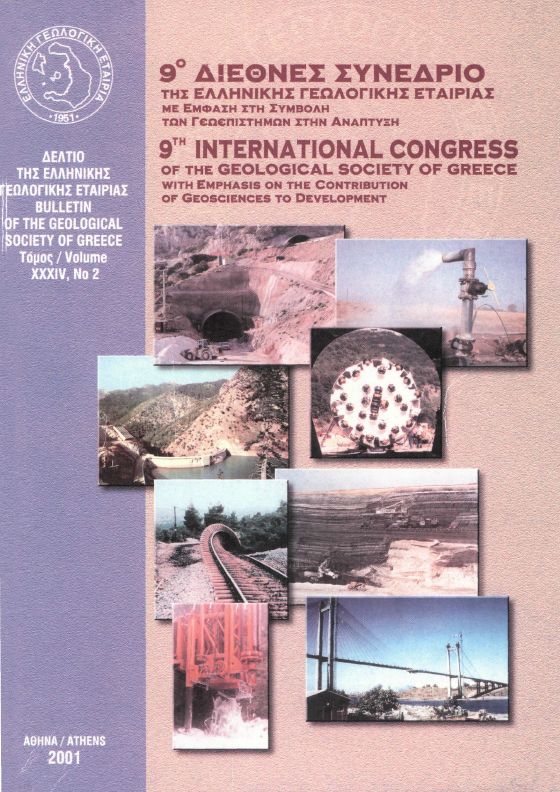A reconnaissance marine geophysical survey in Alexandria, Egypt, for the detection of ancient shipwrecks and other traces of human activity
Abstract
A detailed marine geophysical survey was planned and carried out in the coastal zone of Alexandria (Egypt), by the Laboratory of Marine Geology and Physical Oceanography of the University of Patras in co-operation with the Hellenic Institute of Ancient and Medieval Alexandrian Studies. The survey aimed to the detailed mapping of the geomorphological and textural features of the seafloor and the detection and recognition of targets, which may to represent wrecks or man-made structures. The following equipment were used: (i) an EG&G260 corrected image side scan sonar, (ii) a Remote Operated Vehicle (R.O.V) Benthos MKII and (iii) a Trimble 4000 Differential Global Positioning System (DGPS). The study of the sonar data has shown that the seafloor is covered by rocky outcrops and loose sediments. The rocky outcrops are layered and cover about 75% of the surveyed zone. The rest of the seafloor is covered by sandy sediments. The sonar survey identified a large number of potentially interesting targets (e.g. shipwrecks) on the sandy seafloor. These targets are located in four isolated areas. The detection and the recognition of the targets is complicated by the presence of cohesionless organic mud of anthropogenic origin The sonar survey has shown the presence of elongated features, which are perpendicular to the Alexandria's shoreline and parallel to the Cape Lochias. These elongated features are detected on sandy seafloor in water depth of about 5 to 8 m, have a maximum depth of about 135 m and a width ranging from 5 to 20 m. At least at one site, two of these features cross each other at a water depth of about 6 m. The visual inspection of the elongated features reveals that consist of well-shaped limestone blocks. The areal extension, the size and the geometrical shape of the elongated features, support the suggestion that some of them may be related to manmade structures.
Article Details
- How to Cite
-
ΠΑΠΑΘΕΟΔΩΡΟΥ Γ., ΣΤΕΦΑΤΟΣ Α., ΓΕΡΑΓΑ Μ., ΧΑΛΑΡΗ Α., ΧΡΙΣΤΟΔΟΥΛΟΥ Δ., ΦΕΡΕΝΤΙΝΟΣ Γ., ΠΑΛΑΙΟΚΡΑΣΑΣ Α., ΤΖΑΛΑΣ Χ., FAHMY Μ. Ε., & OMER, S. A. (2001). A reconnaissance marine geophysical survey in Alexandria, Egypt, for the detection of ancient shipwrecks and other traces of human activity. Bulletin of the Geological Society of Greece, 34(4), 1325–1334. https://doi.org/10.12681/bgsg.17222
- Section
- Geophysics

This work is licensed under a Creative Commons Attribution-NonCommercial 4.0 International License.
Authors who publish with this journal agree to the following terms:
Authors retain copyright and grant the journal right of first publication with the work simultaneously licensed under a Creative Commons Attribution Non-Commercial License that allows others to share the work with an acknowledgement of the work's authorship and initial publication in this journal.
Authors are able to enter into separate, additional contractual arrangements for the non-exclusive distribution of the journal's published version of the work (e.g. post it to an institutional repository or publish it in a book), with an acknowledgement of its initial publication in this journal. Authors are permitted and encouraged to post their work online (preferably in institutional repositories or on their website) prior to and during the submission process, as it can lead to productive exchanges, as well as earlier and greater citation of published work.





